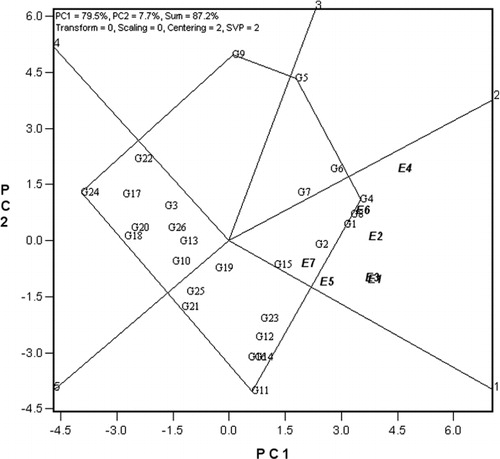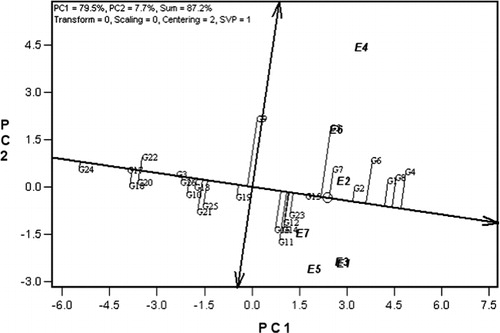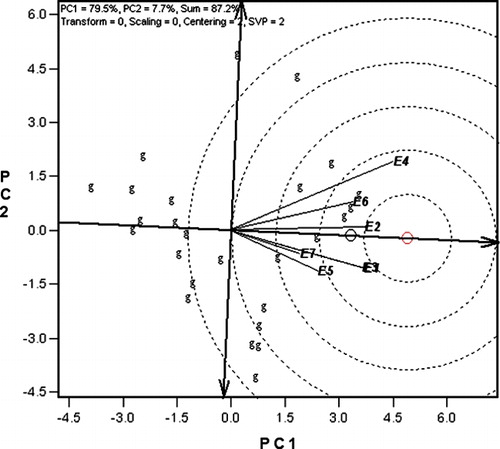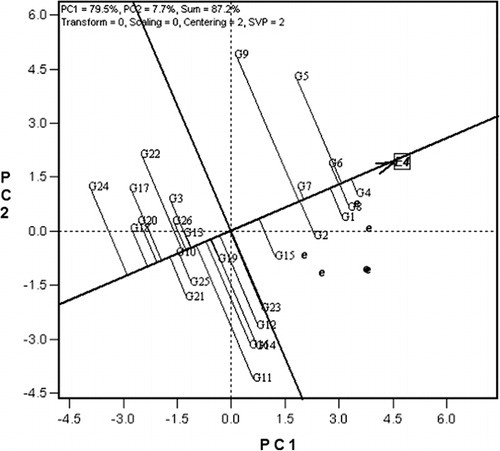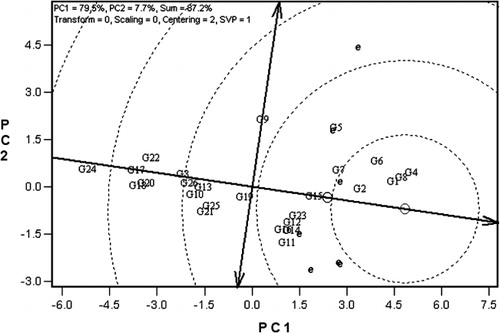Figures & data
Table 1 Agro-climatic characteristics of testing environments in semi-arid regions of Northwest China.
Table 2 Average fresh tuber yields of 26 potato cultivars in each of seven environments during the experiments of 2007–08 and 2009–10 in semi-arid regions in Northwest China. The unit is t ha-1 for all yields.
Table 3 Analysis of variance for yields of 26 potato cultivars across seven test environments during the experiments of 2007–08 and 2009–10 in semi-arid regions in Northwest China.
